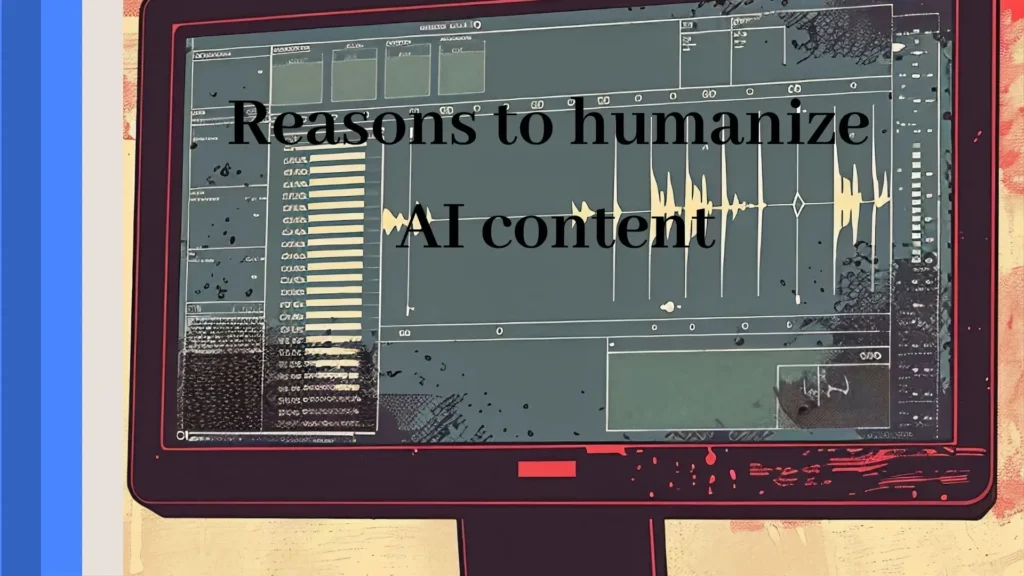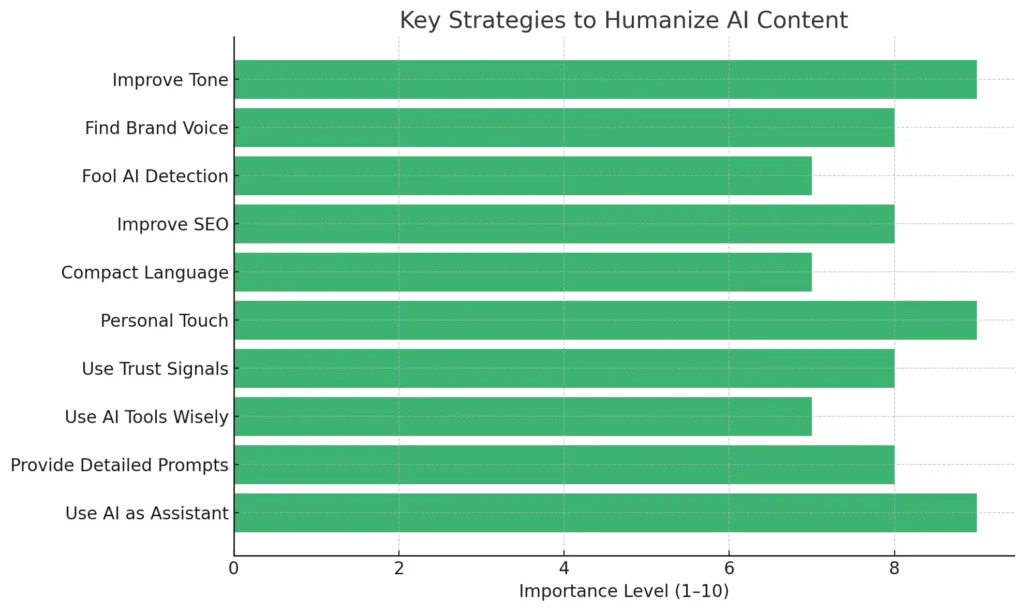In today’s digital age, artificial intelligence (AI) tools are becoming increasingly popular for creating content quickly and efficiently. From blog posts to social media captions, AI-generated text can save time and boost productivity. However, while AI can produce grammatically correct and informative content, it often lacks the warmth, personality, and emotional appeal that connect with real people. That’s where to humanize AI content becomes essential. By adding a human touch, businesses and creators can make their writing more engaging, trustworthy, and effective—ensuring it resonates with readers and aligns with their brand voice.
What Is AI-Generated Content?
An artificial intelligence–generated content is any text, image or audio that was generated by an artificial intelligence. Aids such as ChatGPT rely on huge databases and cutting edge natural language processing to generate written work. They are capable of whipping up blog posts, product descriptions or social media captions quicker than a speeding bullet, just by taking your cues.
Although the technology is time-saving, the outcomes are usually sterile and cold and do not produce the same tones and the emotional attachment that humans deliver. This is the reason why humanization of AI content should be done and then it can be used professionally.
Why Should You Humanize AI Content?
It is a good idea to make AIs create content that sounds more natural:

1. Improve Tone
AI writing can sound too obvious. It can be grammatically fine but at the same time robotic. A human tone also contains emotion, empathy, and rhythm that is very appealing to real people.
Tone editing of AI content helps to make it more engaging particularly when you are using it in your writing in areas that include marketing, blogs and social media.
2. Find Your Brand Voice
Each business has a signature. Regardless of being professional, casual, fun and/or inspiring, the tone should be the same in all the contents.
Not all the time does AI know the style of your brand. Humanizing AI scripts thus assists in ensuring that it aligns the voice and personality of your firm in order to establish a strong brand identity.
3. Fool AI Detection
Most people today are more alert to AI-generated materials. In the event of a writing sounding generic or too perfect, people might believe a robot wrote it; a factor that does influence trust.
AI-generated writing is even becoming identifiable by the search engines and content tools. Although the use of AI does not violate the policy of Google, your site may lose credibility to the excessive use of machine-like content. Those red flags can be avoided by humanizing the content.
4. Improve SEO
Search Engine Optimization (SEO) allows your content to be ranked in a better position on Google search. AI technologies reproduce patterns of existing materials and the outcomes may sound too close to what is already available online.
Your content must be unique and helpful to emerge. Making your pages more attractive to readers and search engines, humanizing the AI text by inserting examples, facts, and a pleasant style of speaking is an inexpensive simple solution.
Best Practices to Humanize AI Content
Having learned why it is important, now it is time to discuss some useful ways of transforming a machine-written text into something readable.

1. Deficiency of AI Traits
In the case of AI, begin with a check of your text to identify typical indicators. These include:
- Using one and the same expressions
- Overusing passive voice
- Prolonged explanations in words
- Absence of personal narrating or views
As soon as you identify these patterns, you will have the opportunity to work on the content.
2. Active Voice Use
AI also tends to use passive voice which is monotonous or even too formal. For example:
The student read the book. (Passive)
The student read the book. (Active)
Active voice is easy to read, it is more direct and seems to be something said by a real person. This is what should always be targeted when editing AI text.
3. Make It Compact
Artificial intelligence will often use out of place jargon or complicated words in order to impress. And this may be confusing to your audience. Rather express in simple language the complex terms.
To illustrate, there is the change:
The person used the application to execute different functions.
to
They employed the app to do things.
Your writing will be more human and stronger because it is being concise.
4. Earn Credibility with Trust
Whatever you write must be authentic and knowledgeable. This implies verification of facts, depreciation of duplicate thoughts as well as new statistics. As far as possible, use your personal experience, customer reviews or research.
When information seems clear, trustworthy and well-edited, you will have more chances to impress your readers.
5. Personal Touch
The difference between human writing and AI is the emotion. Tells real life stories, speaks directly to the audience and uses colloquial examples where possible.
For example:
We all are frustrated with the slow websites but it is not a secret.
is more pleasing to the ears than
Users might become less satisfied because of latency.
These minor adjustments bring about an emotional connection.
6. Valuable AI tools are those that enhance human tone
Some AI software is created to offer more human-like sounds to the content. It is possible to use such tools as Undetectable AI to rewrite the text that sounds too robotic.
You could as well request your AI tool to edit itself.
It can assist you in targeting your specific audience.
7. Provide Large Instructions to AI
- Those who use AI tools are advised to be more specific in order to achieve better outcomes. Always mention:
- Tone of voice (e.g. friendly, professional, humorous)
- The audience (e.g. students, beginners, customers)
- Template (e.g. list, paragraph, tutorial)
- Keywords or phrases to add / exclude
A good example of a prompt is as follows:
- Write in an informal and cheery style a blog intro about those that are just learning about skin care using the keywords glowing skin and hydration tips.
- Obvious instructions result in text that will take a shorter time to edit.
8. AI can be used as a Research Assistant but not as a Writer
AI is a great strategy to come up with ideas, draft contents and accumulate information. But it is poor at creativity, humor or emotion.
Let the AI help you to begin with. Then assume and mold the content making it your own voice. Put personality, stories and points of view in it that people can see in your brand or experience.
9. AI and Plagiarism scan
You can also scan your text, prior to publishing, with tools, such as Originality.ai or Content at Scale, and make sure it no longer sounds like a robot.

You also have a chance of running a plagiarism scan to ensure that it is not repeated.
Conclusion
Making AI-generated content more human-like does not only mean staying undetected but making true connections with your audience. After engaging your personal voice, simplifying the language and personalizing the message, your content turns out to be more effective and memorable.
Remember that AI is an assistive instrument, but human imagination, feeling and understanding must be vigilant. That is what makes an excellent draft out of a good piece of content.
Frequently asked questions on humanized AI content
Owing to the fact that the humans desire to engage with the real experiences, rather than with the machines. Humanized content appears more natural and generates trust and outperforms in performance in such fields as marketing, blogging, and SEO.
Employ preposition use, simple words instead of complex ones, use personal experiences and change words to your own style, but in a friendly conversational style.
Look out for authoritative language or the use of the same words, or the use of words as robots. You could also use such tools as GPTZero or AI detectors that will analyze the text and inform you whether it is probably written by AI.





